A temple for one of the 102 arogayasala (hospitals) built by King Jayavarman VII (r. 1182-1219), Prang Phon Songkhram (ปรางค์พลสงคราม) follows the standard design of arogayasala, including being built primarily with laterite, using sandstone only for trim.
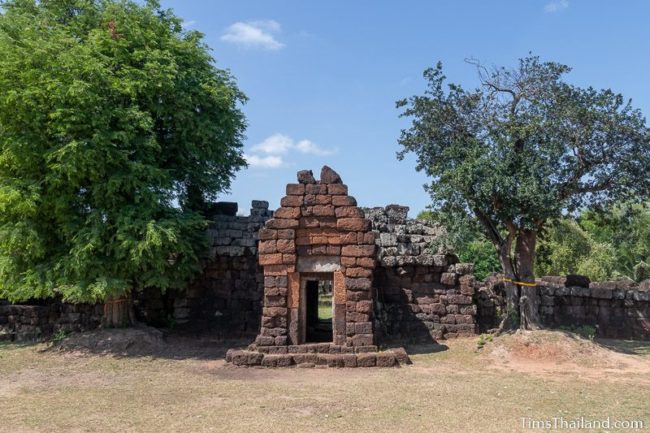
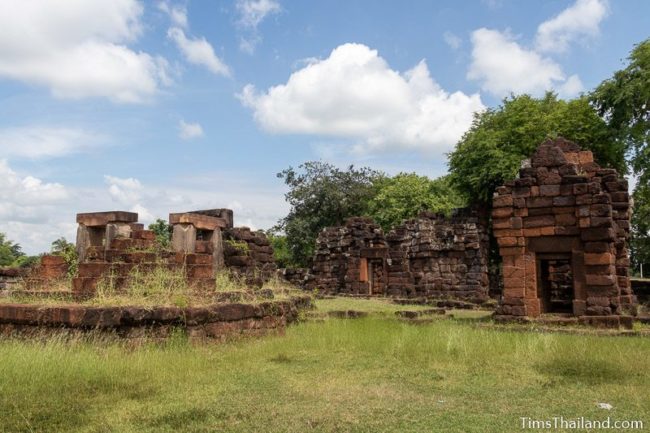
The only original entrance is through an eastern gopura. It’s cross-shaped with small chambers to the east, south, and north (which still have their roofs) and an uncarved lintel over the outer front doorway. The only stone carving at Prang Phon Songkhram is a bit of unfinished design on one side of the western doorway. Two sandstone pedestals are displayed in the main, roofless chamber.
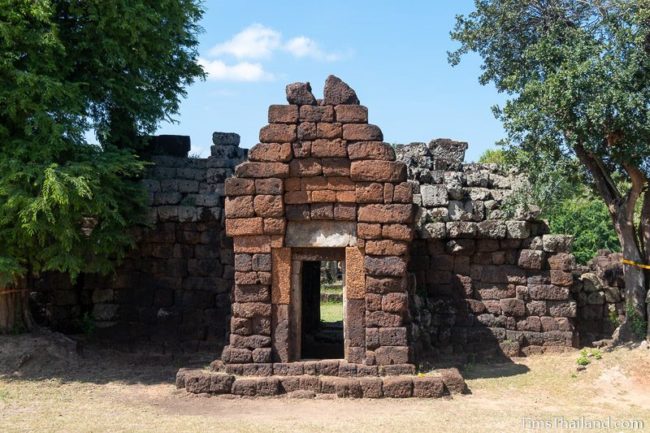
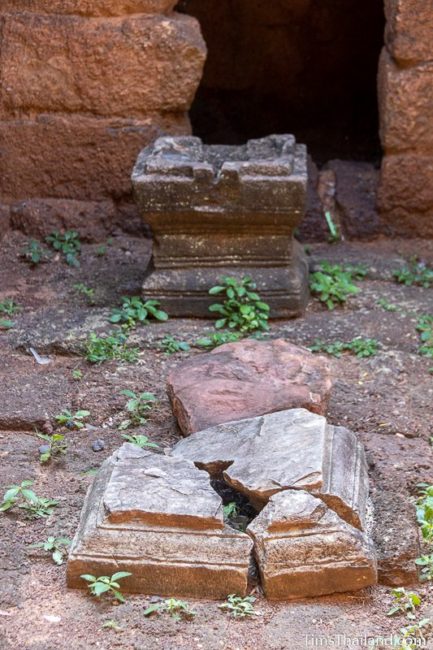
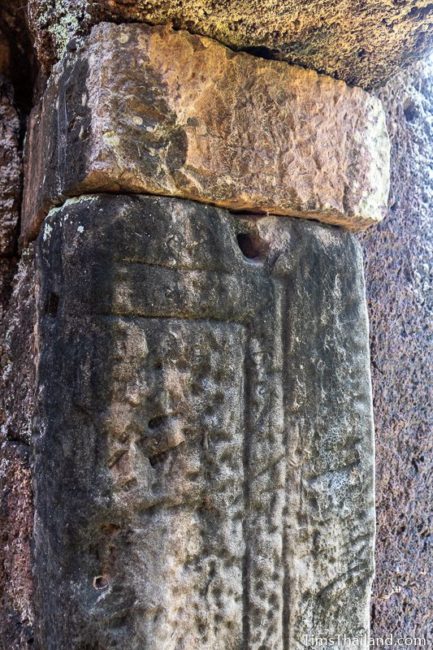
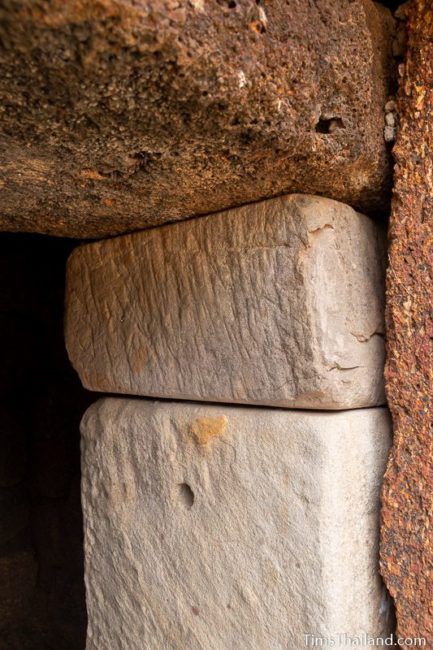
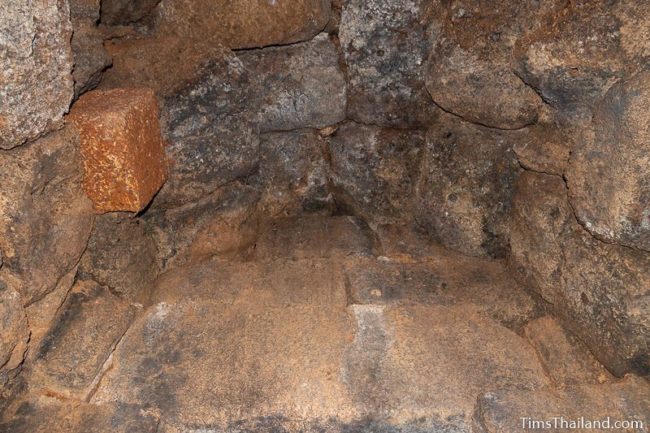
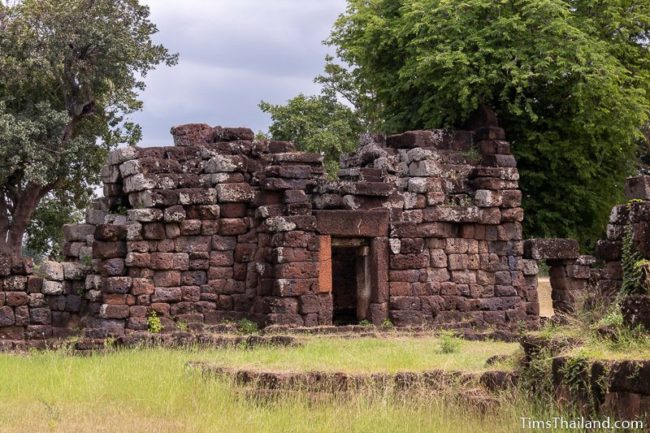
A second entrance, made for easier access by locals who come to worship here, is in the enclosure just to the south of the gopura. The enclosure is mostly complete except for the top layer and, very unusually, is nearly square (29.7m x 30.6m). Most temple layouts are distinctly rectangular.
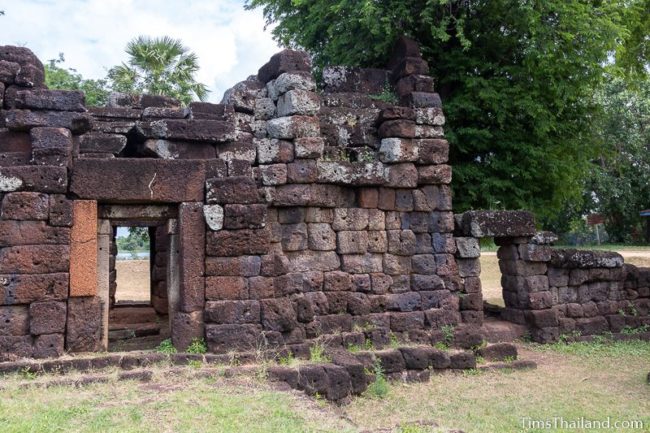
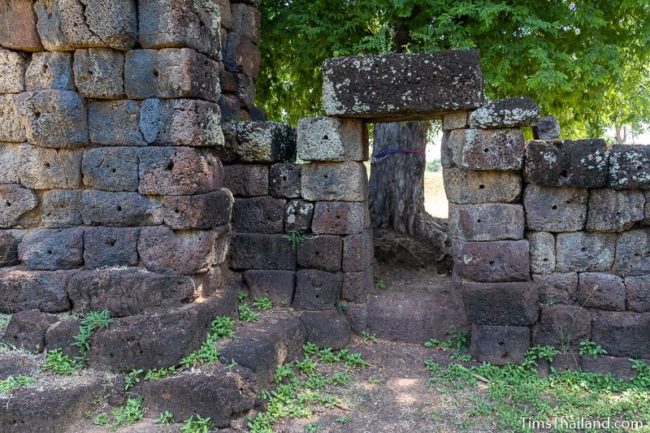
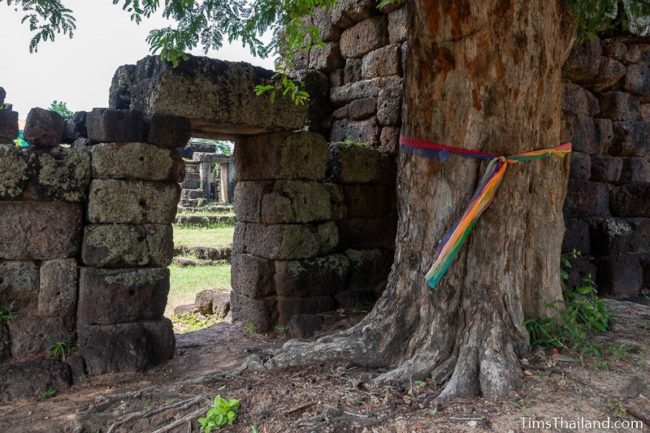
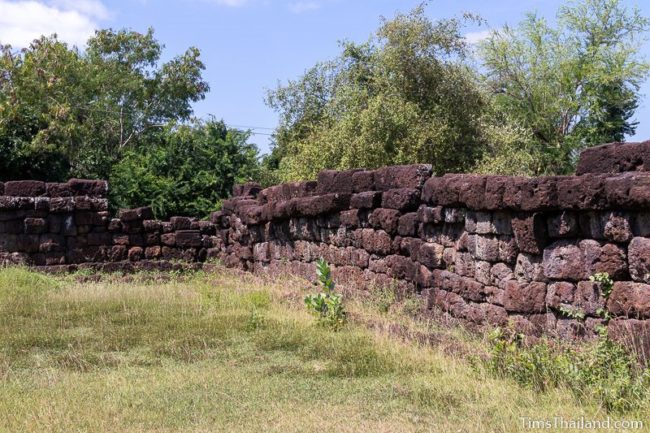
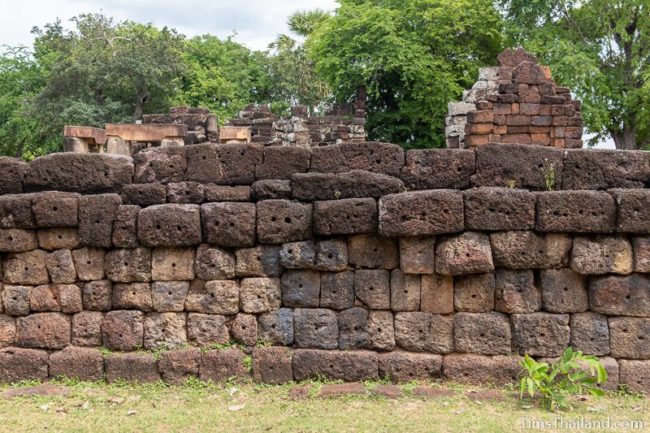
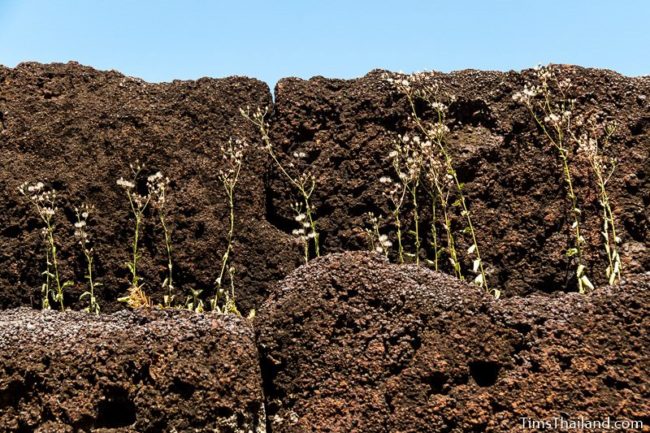
A heavily redented cross-shaped platform links the gopura to the main sanctuary. It stands two blocks tall and is ringed by a step along the edges. Pillar holes in front of the main sanctuary indicate there was likely a wooden roof over it.
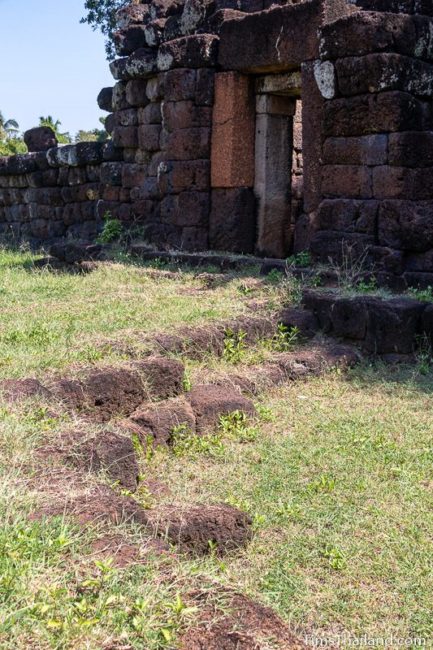
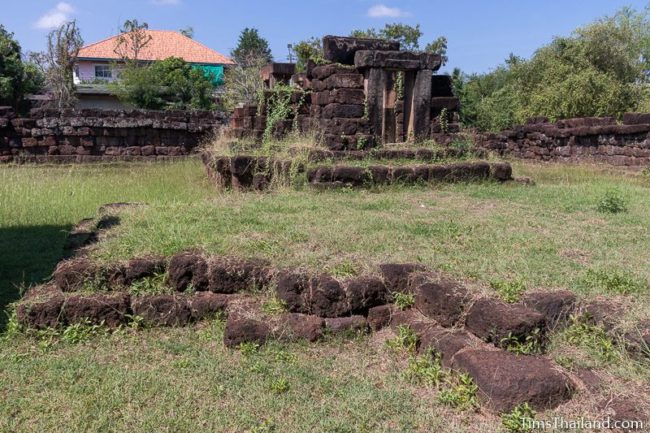
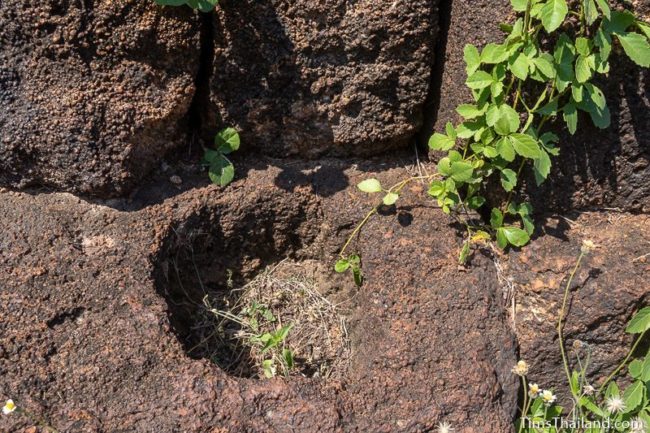
The main sanctuary has a single east-facing tower with the lower level built of laterite and the upper level built of brick, though very little of the brick portion remains. There’s a short window-less mandapa in the front and three false doors on the other sides. Both doorways are topped by uncarved lintels, but the outer doorway’s is hard to notice because it’s lying on its back rather than propped up properly.
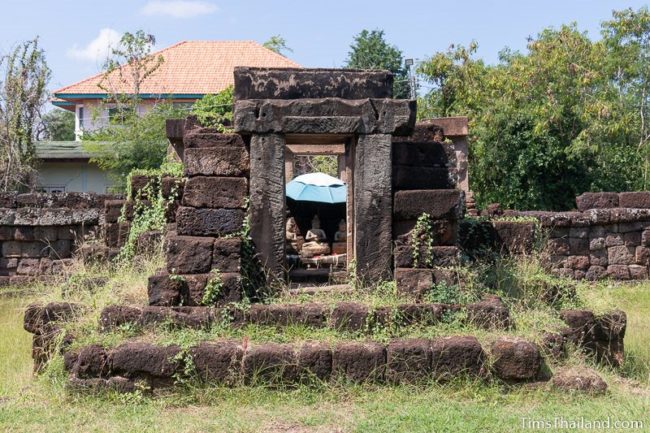
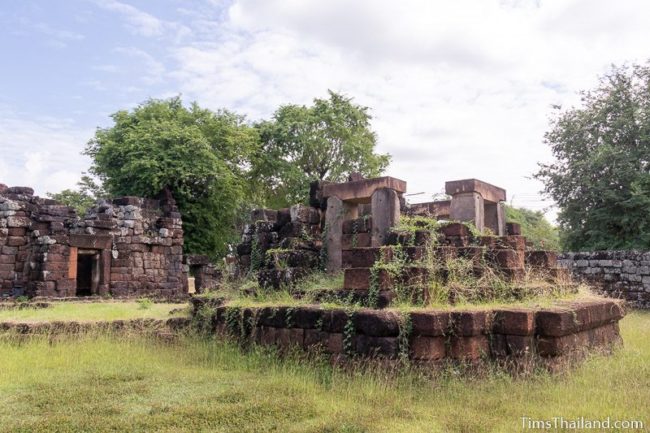
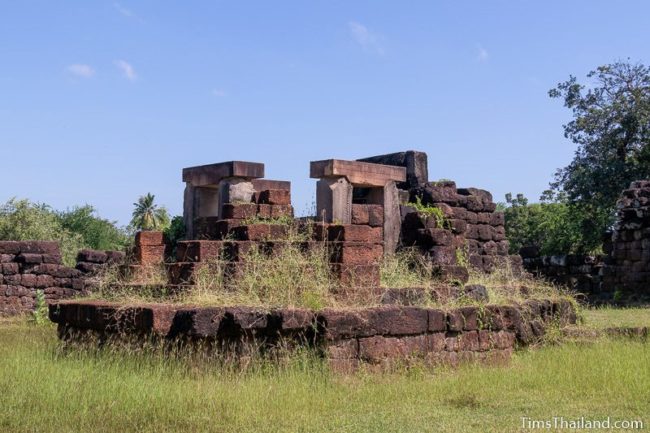
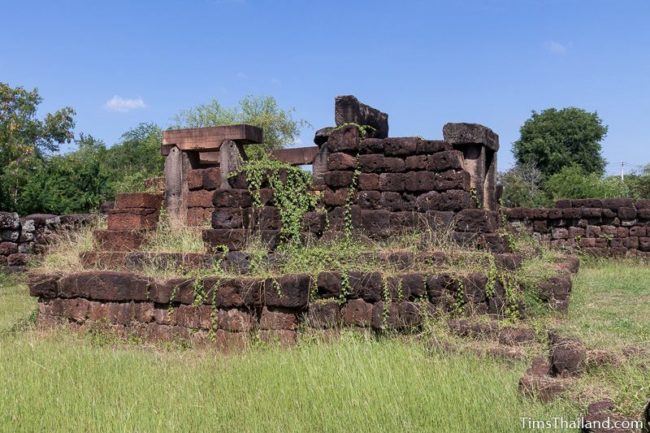
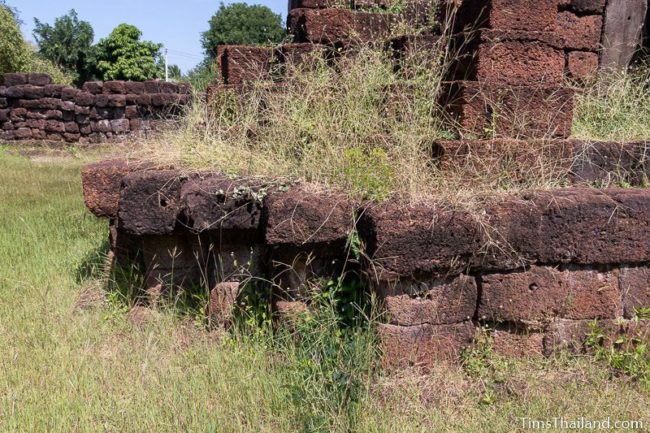
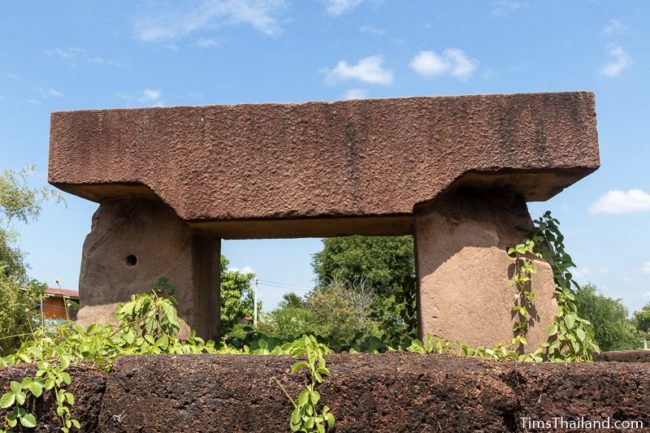
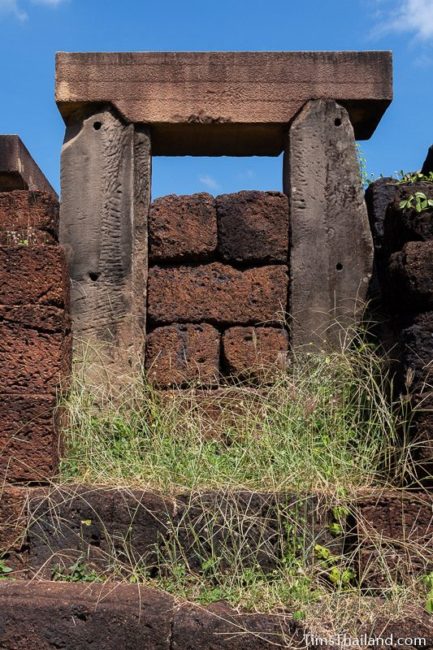
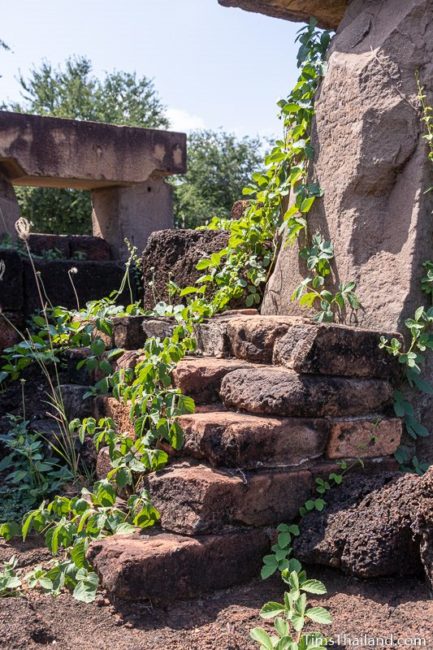
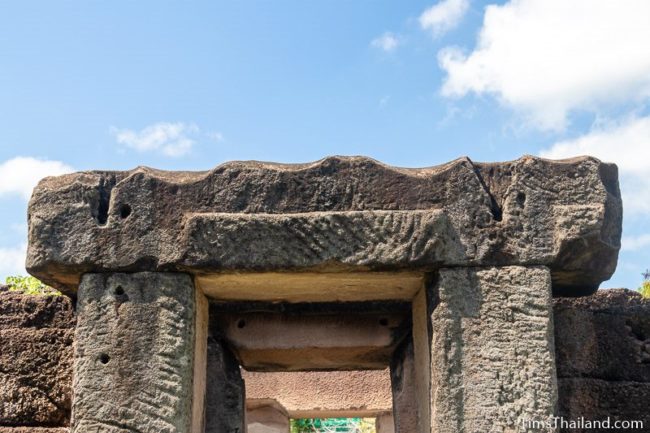
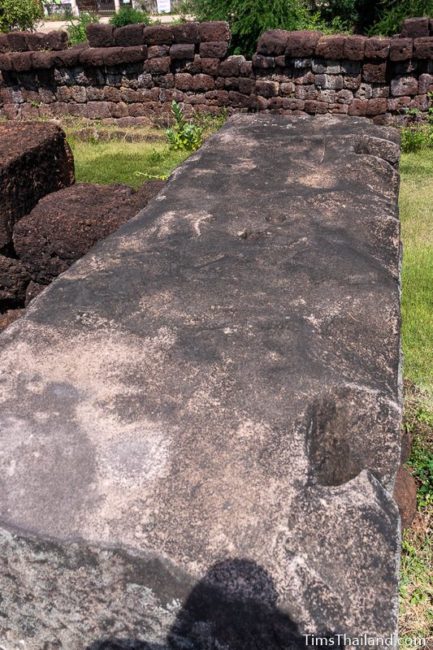
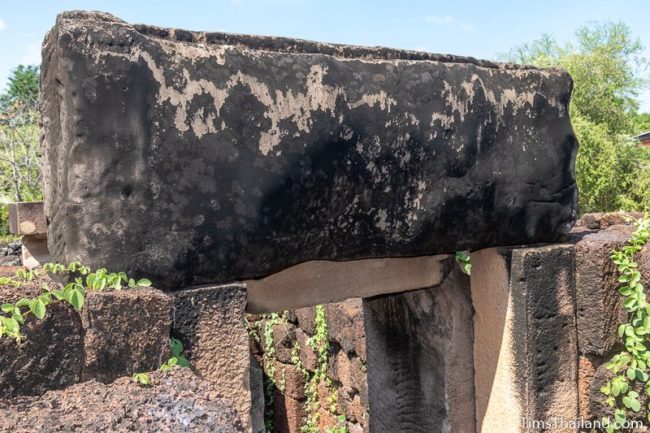
Inside the sanctuary are three replica (but more complete than the heavily damaged originals) Mahayana Bodhisattva statues. They’re damaged, so their identities are uncertain, but one is probably Bhaisajyaguru, the medicine Buddha. They sit on a broken three-holed pedestal that served the same purpose in the Khmer era. Fragments of other sculptures, both stone and bronze, including the head of an Avalokitesvara, the Buddha of Compassion, were also uncovered here during the Fine Arts Department’s excavation. Everything was sent to the Phimai National Museum.
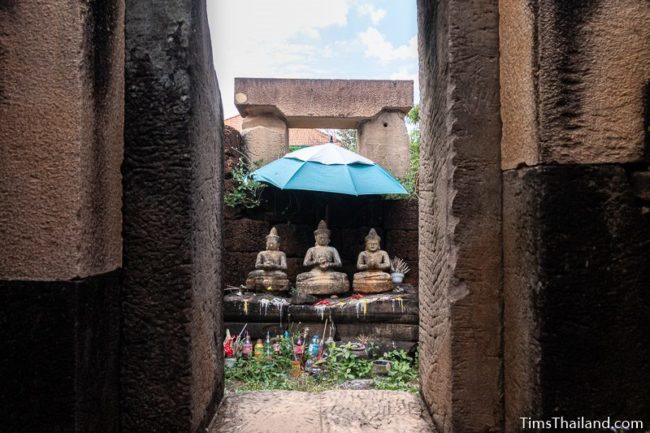
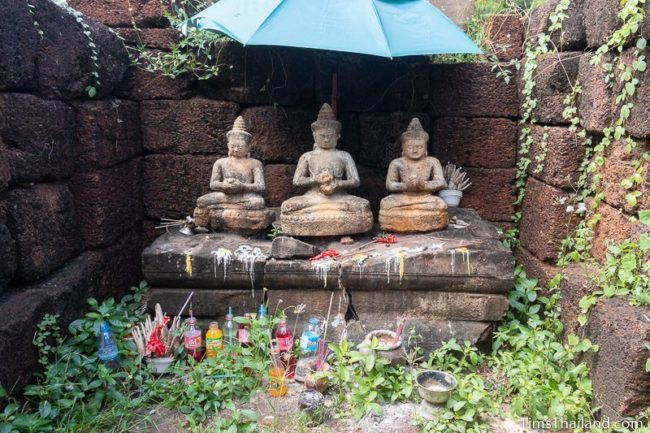
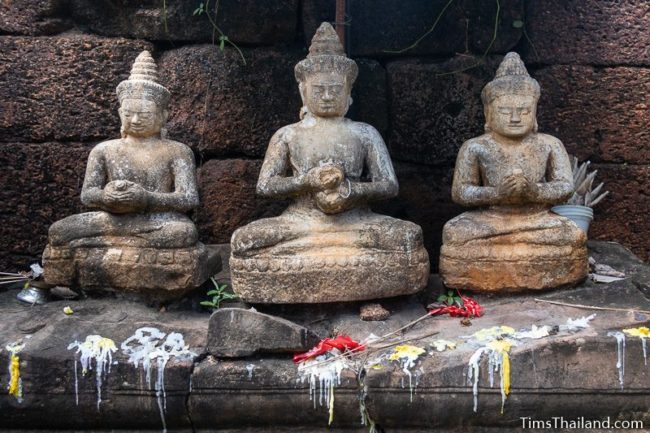
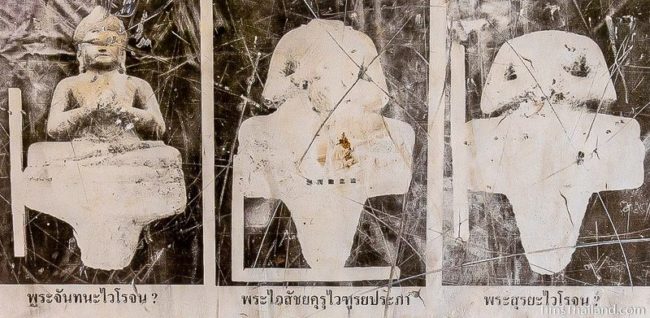
The bannalai in the southeast corner is still standing, though it was restored using a lot of new laterite. There’s no roof over the main room, only the front chamber still has its top, and the only sandstone is the door step. An unusual feature is that the main room is almost completely filled by a short platform rather than the regular flat floor. There’s a sandstone yoni displayed on top of it.
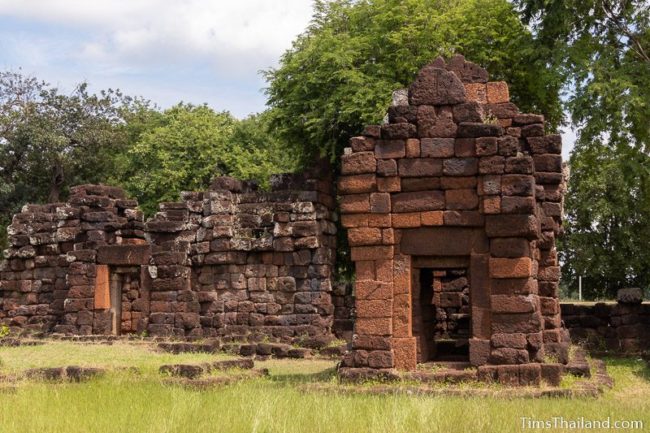
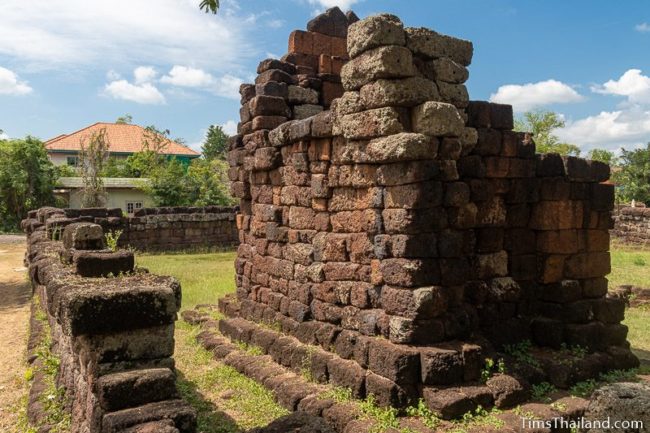
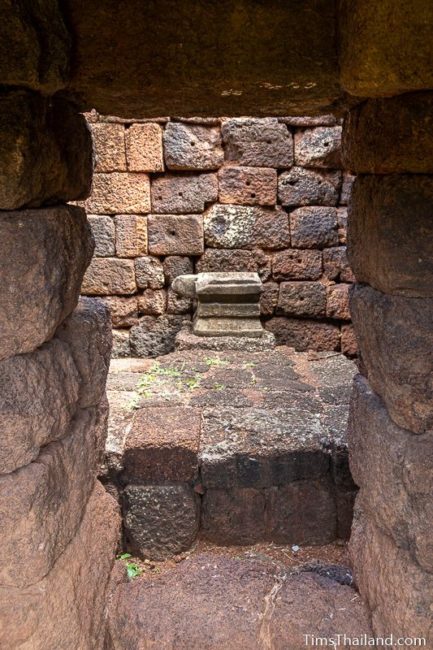
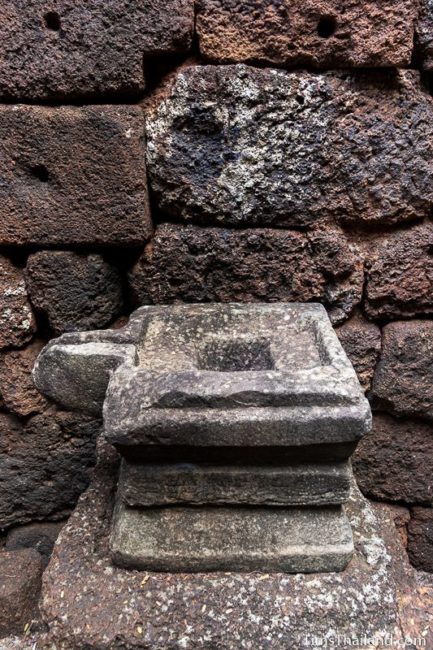
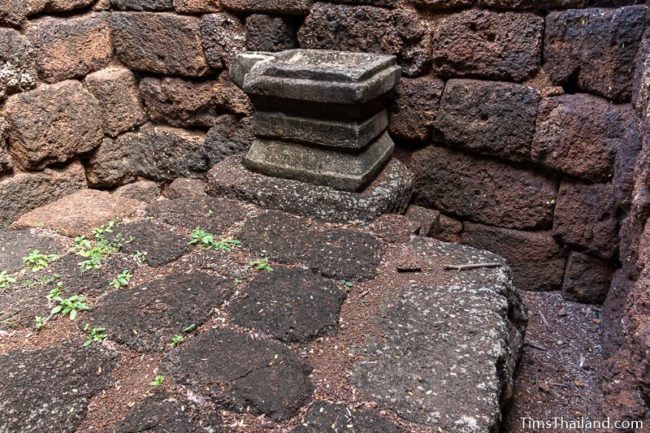
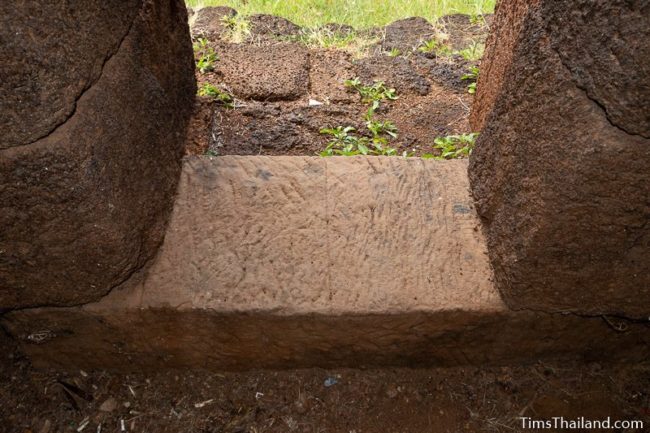
Outside the enclosure to the northeast is a deep, rectangular sacred pond lined by laterite steps.
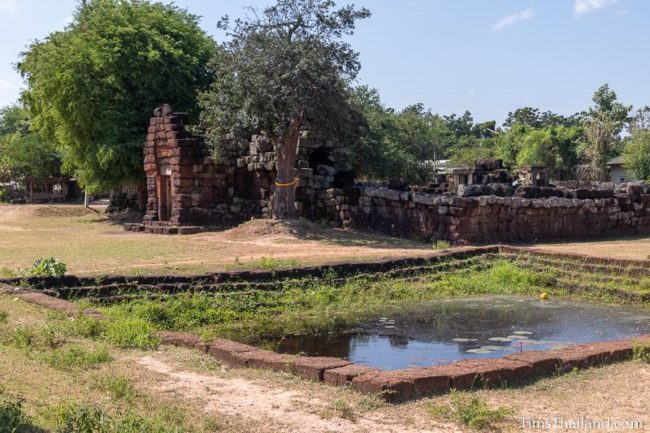
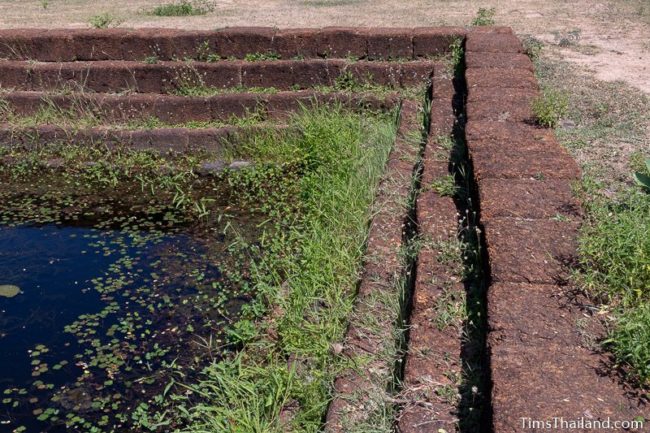
There’s no moat around the temple, and a few elders I asked about it in the village don’t remember ever seeing one. Perhaps the nearby stream running around it fulfilled the symbolism of the great ocean that a moat normally does.
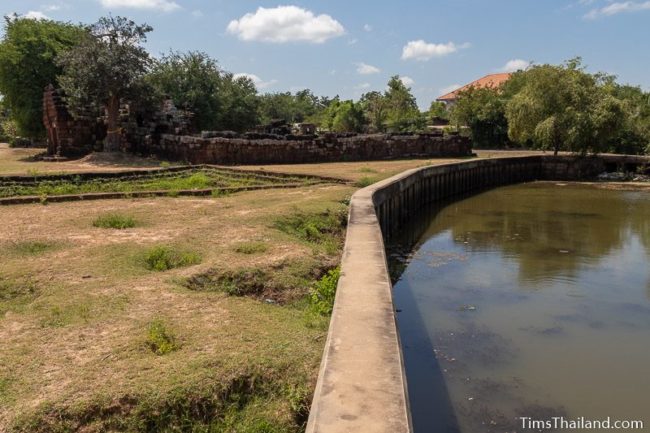
Just 30m in front of Prang Phon Songkhram is the 350m x 185m baray, named Sra Pleng. There are no stones lining its edges, and locals told me they don’t remember ever seeing any.
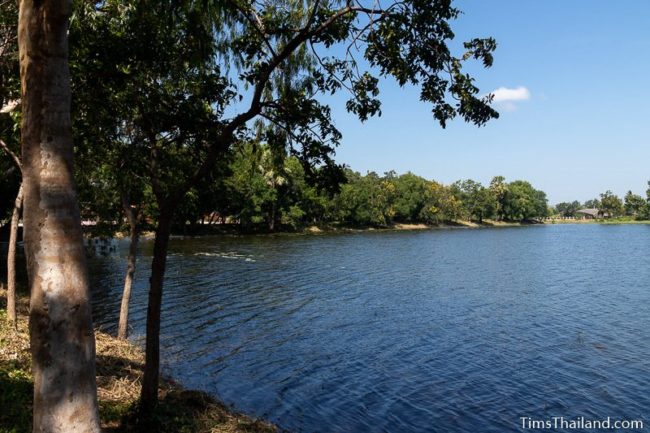
The extra stone – a pile of laterite plus a few sandstone blocks – from the temple not used during the restoration sits along the baray right in front of the building. There are three more small sandstone fragments kept at the nearby spirit shrine. One of them seems to be the corner of a pedestal while the other two are probably chunks that broke off of sandstone blocks.
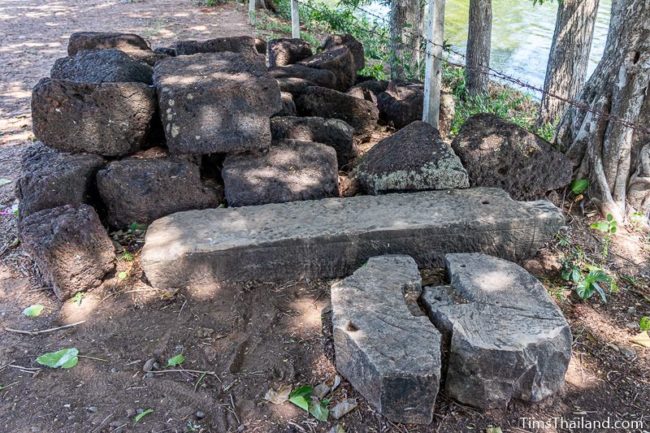
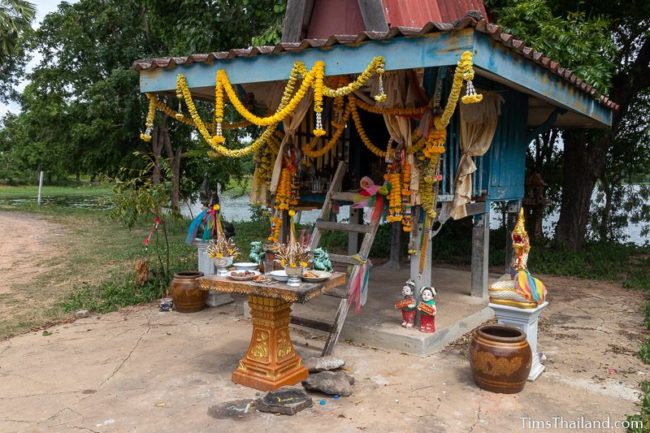
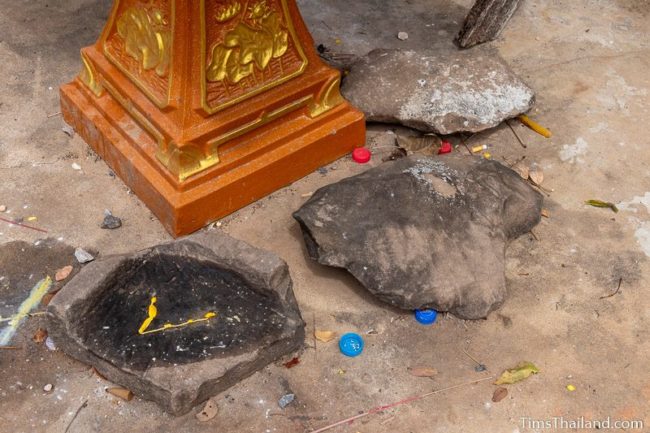
On the west side of the baray, just 600m from the ruins, is Phon Songkhram Train Station, the nearest train station to any Khmer ruin in Thailand – though the limited schedule makes travel by train inconvenient except for an early morning (6.20am) departure from Khorat, then either returning to Khorat (9.59am) or continuing north (9.25am) that morning.
Location – Ban Phon Songkhram, Tambon Phon Songkhram, Amphoe Non Sung, Nakhon Ratchasima Province
Other Names – Prasat Sra Pleng (ปราสาทสระเพลง), Prasat Prang Phon Songkhram (ปราสาทปรางค์พลสงคราม), Prang Phol Songkhram, Prang Pon Songkram
2 thoughts on “Prang Phon Songkhram Khmer Ruin”
Not that proximity to a railway station is a significant factor for lovers of Khmer ruins, but I’d like to propose Wat Sa Kamphaeng Yai near Uthomphon Phisai train station for second closest. I haven’t walked off either one. Just saw your website and it looks interesting.
Do you happen to know if Vance Childress, who worked Prasat Ban Phluang is still alive?
Thanks,
Davies
I have taken the train to Wat Sam Kampaeng Yai also – it’s an easy daytrip from Surin city. Sorry, I do not know anything about Vance Childress.